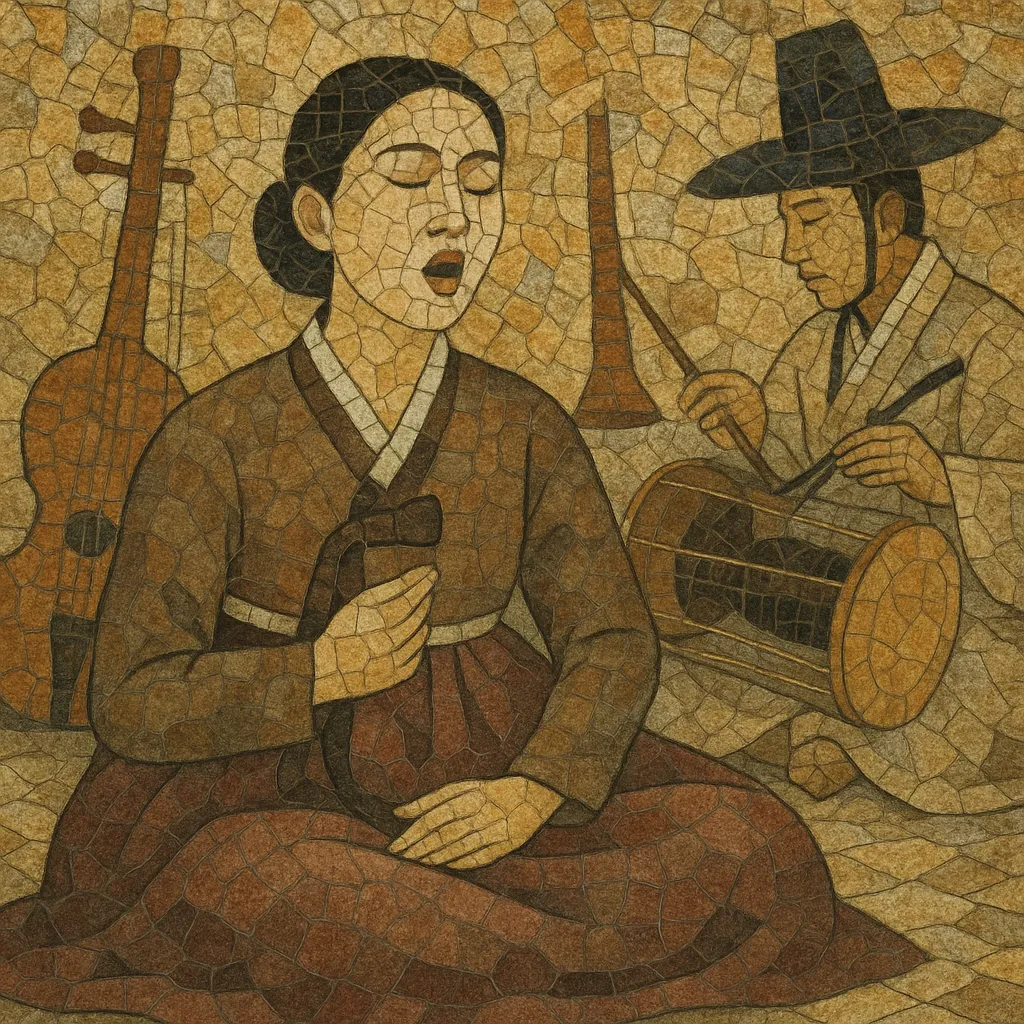Gagok (가곡) is a refined Korean art-song tradition in which a solo vocalist sings long, carefully shaped melodies to classical poetry, accompanied by a small court-style ensemble. It belongs to the jeongga family (elite vocal music) and is prized for its moderation, breath control, and subtle ornamentation (sigimsae).
Performances typically use sijo or gasa texts and unfold at measured, cyclical tempos (jangdan), allowing the voice to spin extended phrases with restrained vibrato and delicate inflections. Male (namchang) and female (yeochang) repertoires are distinct, but both emphasize elegant diction, modal nuance (jo), and ensemble blend. The accompaniment often includes instruments such as gayageum, geomungo, daegeum, piri, haegeum, and janggu, producing a mellow, transparent texture that supports the voice without overshadowing it.
Gagok is recognized by UNESCO (2010) as an Intangible Cultural Heritage of Humanity, reflecting its deep historical roots in Joseon-era court and literati culture and its living transmission through master-disciple lineages.
Gagok emerged within the cultured circles of the Joseon Dynasty, where scholar-officials and court musicians cultivated jeongga, the elite repertoire of vocal music. Drawing on native court traditions (hyangak) and poetic song practices, gagok coalesced in the 18th century as a distinct, highly codified art-song form. Its texts often came from sijo and gasa poetry, whose compact imagery and balanced structure suited gagok’s long-breathed melodic arcs and measured tempos.
By the late Joseon period, gagok had established separate male (namchang) and female (yeochang) repertoires, each with characteristic tessitura, modal color (jo), and pacing. A small court-style ensemble stabilized around plucked zithers (gayageum, geomungo), winds (daegeum, piri), fiddle (haegeum), and drum (janggu). The music circulated both at court and among literati gatherings, thriving on master-disciple transmission and meticulous attention to diction, breath, and ornament.
Colonial-era disruptions and modernization reduced the courtly contexts that sustained gagok, but master performers continued to preserve its techniques. In the postwar and contemporary periods, state institutions, universities, and broadcast orchestras helped stabilize performance practice, teach new generations, and document repertories. Designation as an Important Intangible Cultural Property in Korea further supported formal lineage-based transmission.
In 2010, UNESCO inscribed “Gagok, lyric song cycles accompanied by an orchestra” on the Representative List of the Intangible Cultural Heritage of Humanity. Today gagok is performed in concert halls and festivals, taught in conservatories and the National Gugak Center, and occasionally reinterpreted in creative (changjak gugak) and fusion contexts while maintaining its core aesthetic of restraint, breath, and poetic clarity.


